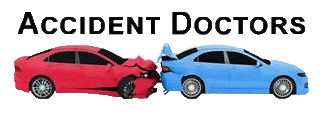A Comprehensive Guide on How to Cope with Slow Recovery After a Car Accident
Car accidents are a traumatic event that can leave lasting physical injuries and emotional trauma.
Recovery often takes longer than expected, which can be frustrating.
This guide will help you understand the healing process and provide practical steps to cope with a slow healing journey.
Please note: We are accident doctors who charge you $0 out of pocket for the best after car accident medical care.
We will help you overcome your injuries from a car accident!
You should come in and get treated by us first, and let us refer you to the best auto accident attorneys in Phoenix or Mesa.
Key Takeaways
Recovery Fundamentals
Timeline Variables
- Injury severity determines healing duration.
- Individual health factors affect recovery speed.
- Age impacts healing capacity.
- Early medical intervention crucial for optimal recovery.
Treatment Priorities
Essential Care Steps
- Immediate medical evaluation required.
- Follow prescribed treatment plans consistently.
- Regular monitoring of progress.
- Adjustment of care plans as needed.
Physical Recovery Components
Key Elements
- Physical therapy participation.
- Proper nutrition and hydration.
- Adequate rest and sleep.
- Gradual return to activities.
- Regular exercise within prescribed limits.
Mental Health Aspects
Psychological Recovery
- Address trauma and PTSD symptoms.
- Manage accident-related anxiety.
- Watch for signs of depression.
- Maintain social connections.
- Consider professional counseling.
Long-term Considerations
Ongoing Management
- Prevention of chronic pain development.
- Regular medical follow-ups.
- Lifestyle modifications as needed.
- Building sustainable recovery habits.
- Setting realistic recovery expectations.
Understanding Recovery After a Car Accident

Recovering from a car accident is rarely a quick process.
The time it takes to heal depends on several factors:
- Severity of injuries
- Your overall health before the accident
- How quickly do you receive medical care
- Your age
- Lifestyle factors like diet and activity level
Most people expect car accident recovery to take several weeks to several months, with delayed lower back pain often extending the timeline. More serious injuries may require a year or more of rehabilitation.
It’s normal to face challenges during healing, such as:
- Ongoing pain and discomfort
- Limited mobility
- Difficulty sleeping
- Emotional distress or anxiety
- Frustration with the slow pace of recovery
Remember that everyone’s healing journey is unique. Avoid comparing your progress to others or getting discouraged if recovery takes longer.
Steps to Take for Slow Car Accident Recovery
#1. Seek Immediate Medical Attention
Always see a car accident doctor immediately after an accident, even if you initially feel fine.
Some injuries may not be apparent initially but can worsen without proper care. A medical evaluation will:
- Identify hidden injuries
- Create a treatment plan
- Document your condition for insurance claims
Follow up with your doctor regularly to monitor your progress and adjust treatment as needed.
#2. Follow Your Doctor’s Treatment Plan

Adhering to your prescribed treatment is crucial for proper healing.
This may include:
- Taking medications as directed
- Attending physical therapy sessions
- Using assistive devices like crutches or braces
- Getting adequate rest
Don’t skip appointments or stop treatment early, even if you start feeling better. Completing the full course of care helps prevent complications and setbacks.
#3. Understand Recovery Timeline Expectations
Ask your healthcare providers for a realistic timeline of what to expect during recovery.
This helps you set appropriate goals and manage your expectations. Remember that healing is rarely linear – you may have good days and bad days.
#4. Create a Structured Recovery Routine
Establishing a daily routine can provide a sense of normalcy and help you stay on track with your recovery.
Include time for:
- Rest and sleep
- Gentle exercise or physical therapy
- Healthy meals
- Relaxation and stress relief
- Social connection
Stick to a consistent schedule as much as possible, but be flexible when needed.
Medical Treatment Options
Emergency Care
Seek emergency treatment immediately if you experience:
- Loss of consciousness
- Severe pain
- Difficulty breathing
- Suspected head, neck, or spinal injuries
- Uncontrolled bleeding
Don’t hesitate to call 911 or go to the ER if you’re unsure about the severity of your injuries.
Primary Care Physician’s Role
Your primary doctor can:
- Assess your overall health
- Coordinate care with specialists
- Monitor your recovery progress
- Adjust treatments as needed
Schedule regular follow-ups to keep your recovery on track.
Medication Management

Pain relief is often a key part of car accident recovery.
Your doctor may recommend:
- Over-the-counter pain relievers like ibuprofen or acetaminophen
- Prescription medications for more severe pain
- Muscle relaxants for spasms or tension
Always take medications exactly as prescribed and report any side effects to your doctor.
Pain Management Strategies
Beyond medication, try these techniques to manage pain:
- Ice or heat therapy
- Gentle stretching
- Massage
- Relaxation techniques like deep breathing
- Chiropractic care
When Surgery Might Be Necessary
In some cases, surgery may be required for proper healing.
This is more common with:
- Severe fractures
- Torn ligaments or tendons
- Spinal cord injuries
- Internal organ damage
Your doctor will discuss surgical options if needed and help you weigh the risks and benefits.
Physical Rehabilitation Approaches
Chiropractic Care Benefits

Chiropractic treatment can help:
- Reduce pain and inflammation
- Improve range of motion
- Correct misalignments from the accident
- Speed up overall recovery
Many people find relief from whiplash and other soft tissue injuries through chiropractic care. Chiropractic adjustments can help alleviate pain, restore mobility, and promote healing in soft tissue injuries. In addition to traditional treatments, many practitioners also incorporate best practices for whiplash recovery, such as gentle exercise, stretching, and proper posture training. This comprehensive approach addresses the immediate symptoms and contributes to long-term wellness and injury prevention.
Physical Therapy Importance
Physical therapy plays a crucial role in car accident recovery by:
- Strengthening weakened muscles
- Improving flexibility and coordination
- Teaching proper body mechanics
- Reducing pain and stiffness
Stick with your PT program even when it’s challenging for the best results.
Recommended Stretches and Exercises

Your physical therapist will design a custom exercise plan tailored to your injuries. This may include:
- Gentle stretching
- Range of motion exercises
- Core strengthening
- Balance and coordination drills
Start slowly and gradually increase intensity as you heal.
Active Rehabilitation Techniques
Active rehab involves exercises that mimic daily activities to help you regain function. This might include:
- Practicing getting in and out of a car
- Simulating work tasks
- Improving posture and body awareness
These exercises help bridge the gap between therapy and returning to normal life.
Building Strength Safely
As you recover, focus on gradually rebuilding strength without overdoing it. Follow these tips:
- Start with low-impact activities like walking or swimming
- Use light weights and high repetitions
- Listen to your body and stop if you feel pain
- Increase intensity slowly over time
Always check with your doctor before starting a new exercise routine.
Nutrition and Hydration for Recovery
Foods that Promote Healing

Eating a nutrient-rich diet supports faster healing. Focus on:
- Lean proteins for tissue repair
- Fruits and vegetables for antioxidants
- Whole grains for energy
- Healthy fats for inflammation reduction
Some specific foods that may help include:
- Fatty fish (salmon, tuna)
- Berries
- Leafy greens
- Nuts and seeds
- Greek yogurt
Importance of Proper Hydration

Staying well-hydrated is crucial for recovery. Water helps:
- Flush out toxins
- Reduce inflammation
- Transport nutrients to healing tissues
- Maintain proper joint function
Aim for at least 8 glasses of water daily, more if you’re active or in a hot climate.
Supplements that May Help
Talk to your doctor about supplements that could support healing, such as:
- Vitamin C for collagen production
- Vitamin D for bone health
- Omega-3 fatty acids for inflammation reduction
- Protein powder for muscle repair
Only start new supplements with medical approval, as some may interact with medications.
Meal Planning During Recovery
Planning healthy meals in advance can make sticking to a nutritious diet easier. Try:
- Prepping ingredients for the week
- Making large batches to freeze for later
- Keeping healthy snacks on hand
- Using a meal delivery service if cooking is difficult
Foods to Avoid
Some foods can hinder healing and should be limited:
- Processed foods high in sugar and unhealthy fats
- Alcohol
- Caffeine (may interfere with sleep)
- Excessively salty foods (can increase inflammation)
Managing Daily Activities
Creating a Recovery Routine

Establish a daily schedule that includes the following:
- Regular sleep and wake times
- Meal planning
- Exercise or physical therapy
- Rest periods
- Social activities
Having structure helps you stay on track with your recovery goals.
Modifying Daily Tasks
You may need to adjust how you perform everyday activities as you heal. Consider:
- Using assistive devices like reachers or shower chairs
- Breaking tasks into smaller steps
- Asking for help with challenging chores
- Rearranging your living space for easier access
Gradually Returning to Activities
Slowly reintroduce normal activities as your doctor approves. This might include:
- Light housework
- Short social outings
- Brief periods of computer work
- Gentle hobbies like reading or crafts
Increase duration and intensity gradually to avoid setbacks.
Sleep and Rest Importance
Quality sleep is essential for healing. Aim for 7-9 hours per night and try:
- Keeping a consistent sleep schedule
- Creating a relaxing bedtime routine
- Make your bedroom dark, quiet, and cool
- Avoiding screens before bed
Don’t hesitate to take short rest breaks during the day if needed.
Setting Realistic Goals
Break your recovery into small, achievable goals. This might include:
- Walking for 10 minutes without pain
- Completing a full physical therapy session
- Preparing a healthy meal
- Socializing with friends for an hour
Celebrate each milestone to stay motivated during your recovery journey.
Mental Health Support

Dealing with Trauma and PTSD
Car accidents can be traumatic experiences, leading to symptoms like:
- Flashbacks or nightmares
- Anxiety about driving or riding in cars
- Mood swings or irritability
- Difficulty concentrating
Seek professional help if these symptoms persist or interfere with daily life.
Anxiety Management Techniques
Try these strategies to manage accident-related anxiety:
- Deep breathing exercises
- Progressive muscle relaxation
- Mindfulness meditation
- Journaling
- Talking to a trusted friend or family member
Depression Awareness and Treatment
Watch for signs of depression, such as:
- Persistent sadness or hopelessness
- Loss of interest in activities you once enjoyed
- Changes in appetite or sleep patterns
- Difficulty concentrating or making decisions
Don’t hesitate to reach out to a mental health professional if you’re struggling with depression.
Professional Counseling Options
Consider working with a therapist who specializes in:
- Cognitive-behavioral therapy (CBT)
- Eye Movement Desensitization and Reprocessing (EMDR)
- Trauma-focused therapy
Your doctor can provide referrals to qualified mental health providers.
Building Emotional Resilience
Strengthen your emotional coping skills by:
- Practicing self-compassion
- Focusing on what you can control
- Staying connected with supportive people
- Engaging in activities that bring you joy
- Setting small, achievable goals
Support Systems and Resources
Working with Healthcare Providers
Build a strong relationship with your medical team by:
- Asking questions about your treatment
- Reporting any new symptoms or concerns
- Following through with recommended care
- Keeping track of appointments and medications
Good communication with your providers leads to better outcomes.
Family and Friend Support
Lean on loved ones for practical and emotional support:
- Ask for help with daily tasks
- Share your feelings and concerns
- Invite them to medical appointments if needed
- Accept offers of assistance
Don’t be afraid to let others know what you need.
Support Groups
Connecting with others who have been through similar experiences can be helpful. Look for:
- In-person support groups at hospitals or community centers
- Online forums and chat groups
- Car accident survivor meetups
Sharing your story and hearing from others can provide comfort and valuable insights.
Professional Assistance Options
Consider working with:
- A car accident lawyer to handle insurance claims and legal issues
- A case manager to coordinate your care
- An occupational therapist to help with daily living skills
- A vocational counselor if you need to change careers due to injuries
Community Resources
Look into local services that may be available:
- Transportation assistance
- Meal delivery programs
- Home health care
- Financial counseling
- Adaptive equipment lending programs
Your doctor or social worker can help you find relevant resources in your area.
Long-term Recovery Strategies
Preventing Chronic Pain
Take steps to avoid long-term pain issues:
- Complete all recommended treatments
- Practice good posture and body mechanics
- Stay active within your limits
- Manage stress levels
- Address pain early before it becomes severe
Maintaining Progress
Keep up with healthy habits even as you feel better:
- Continue prescribed exercises
- Eat a balanced diet
- Get regular sleep
- Practice stress management techniques
- Stay connected with your support system
Regular Check-ups
Schedule follow-up appointments to:
- Monitor your progress
- Catch any new issues early
- Adjust your treatment plan as needed
- Address any ongoing concerns
Take advantage of these important check-ins, even if you’re feeling good.
Lifestyle Modifications
You may need to make some long-term changes to support your health:
- Modifying your work environment for better ergonomics
- Changing your exercise routine to accommodate new limitations
- Adjusting your diet to support ongoing healing
- Finding new hobbies or activities that fit your abilities
Be open to trying new approaches to daily life.
Future Injury Prevention
Take steps to reduce your risk of future accidents:
- Practice defensive driving techniques
- Keep your vehicle well-maintained
- Avoid distractions while driving
- Use proper safety equipment like seatbelts and bike helmets
Getting Back to Normal Life

Returning to Work
Work with your doctor and employer to plan a safe return to work:
- Consider a gradual return with reduced hours
- Request accommodations if needed (e.g., ergonomic equipment, frequent breaks)
- Be honest about your limitations
- Communicate openly with your supervisor about your progress
Resuming Daily Activities
Slowly reintegrate normal activities as you’re able:
- Start with short outings or errands
- Gradually increase time spent on household tasks
- Ease back into social gatherings
- Return to hobbies and leisure activities at a comfortable pace
Listen to your body, and don’t push too hard too soon.
Rebuilding Confidence
Regaining confidence after an accident takes time. Try:
- Setting small, achievable goals
- Celebrating your progress, no matter how small
- Practicing positive self-talk
- Visualizing successful outcomes
- Seeking support when you feel discouraged
Setting New Health Goals
As you recover, consider setting new health and wellness goals:
- Improving overall fitness
- Learning stress management techniques
- Exploring new hobbies or interests
- Focusing on preventive health measures
Use this experience as motivation to prioritize your well-being.
Moving Forward After Recovery
Remember that healing is a journey, not a destination. As you move forward:
- Be kind to yourself on difficult days
- Reflect on how far you’ve come
- Share your story to help others if you feel comfortable
- Focus on the present and future rather than dwelling on the past
Conclusion

Coping with slow recovery after a car accident requires patience, persistence, and a holistic approach to healing.
By following your treatment plan, prioritizing self-care, and seeking support when needed, you can navigate the challenges of recovery and gradually return to a fulfilling life.
Remember that healing takes time, and every small step forward is a victory worth celebrating.
FAQs
#1. How long does it typically take to recover from a car accident?
Recovery time varies greatly depending on the severity of injuries and individual factors. Minor injuries may heal in a few weeks, while more serious injuries can take months or even years to recover fully.
#2. What should I do if my pain isn’t improving after following my treatment plan?
Contact your doctor to discuss your concerns. They may need to adjust your treatment, order additional tests, or refer you to a specialist for further evaluation.
#3. Is it normal to feel anxious about driving after a car accident?
Anxiety about driving or riding in cars is common after an accident. If these feelings persist or interfere with daily life, consider speaking with a mental health professional who specializes in trauma.
#4. How can I manage financial stress during my recovery?
Speak with a car accident lawyer about your options for compensation, explore community resources for financial assistance, and communicate with your medical providers about payment plans if needed.
#5. When is it safe to return to exercise after a car accident?
Always consult your doctor before resuming training. They can provide guidelines based on your specific injuries and recovery progress. Generally, start with gentle activities and gradually increase intensity as tolerated.
#6. What can I do to improve my sleep while recovering from injuries?
Establish a consistent sleep schedule, create a relaxing bedtime routine, ensure your comfortable sleeping environment, and avoid screens before bed. If pain is interfering with sleep, talk to your doctor about pain management options.
#7. How can I support a loved one who is struggling with a slow recovery after an accident?
Offer practical help with daily tasks, listen without judgment, encourage them to follow their treatment plan, and help them connect with professional support if needed. Be patient and understanding of their challenges.
#8. What are some signs that I might be developing chronic pain after a car accident?
Persistent pain lasting beyond the expected healing time, pain that spreads to other areas of the body, increased sensitivity to touch or temperature, and pain that doesn’t respond to typical treatments may indicate developing chronic pain. Discuss these symptoms with your doctor promptly.

